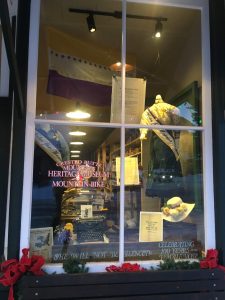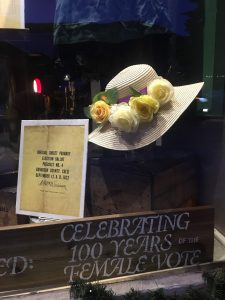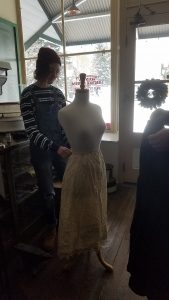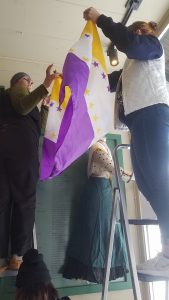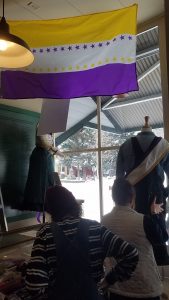Window Exhibit
She Will Not Be Silenced: Celebrating 100 Years of the Female Vote
December 12, 2019 – January 31, 2020
Throughout the fall semester of 2019, we, a cohort of students in the History Department at Western Colorado University have been working on a project to expose the history behind women’s suffrage in the state of Colorado and nationally. Our mission is creating a women’s suffrage exhibition in the Crested Butte Mountain Heritage Museum is to celebrate the centennial anniversary of one of the most pinnacle events in American history at a local, intimate level. Crested Butte, Colorado is near and dear to our hearts, and many of us students call this area home. The 19th Amendment ensures a sacred, equitable bond between women and the freedoms endowed in the United States Constitution. As we are very proud of the inauguration of the 19th Amendment into legislation, we are honored with the task of educating residents and visitors to Crested Butte about our national, shared heritage. We thank you for this opportunity to be the architects of, She Will Not be Silenced: Celebrating 100 Years of the Female Vote, our interpretation of oral histories and archival material that features the progression of female civil rights and gender equality.
From photographs, period news sources, testimonies, and voting records, there is authentic evidence of Colorado’s profound value of women’s equality dating back to before 1893. Women of the rural American west persevered, bringing fortitude and survival to their communities by participating in the responsibilities of frontier life. Until 1893, women in the Colorado Territory did not share in the same legal rights as men but contributed in the pioneering of Colorado towards our future statehood. Our exhibition emphasizes the strength of the rural woman and her integral role in shaping communities like Crested Butte. She fought alongside male counterparts to create mining and ranching towns, and as Colorado and many other states moved for statehood, the future of the vote was likewise, rightfully hers.
The exhibition presents a new image of women at the end of the nineteenth century and into the twentieth century by spotlighting not only the national woman but also, the local rural heroine at the time of suffrage. Our interpretation of the women that shaped Colorado includes using clothing and photographs to emphasize that there are many archetypes of what the suffragette looked like. Among some of the artifacts that we plan to use, archived clothing from the Crested Butte Mountain Heritage Museum owned by a local woman, Katherine Kochevar will be on display on a dress form. Her tale of immigration from Austria to Crested Butte in the late 1800s to establishing a thriving business in the community gives prominence to the rural woman as well as her position as an entrepreneur. Furthermore, reproductions of period sashes, rosettes, and a hat that would have been used in rallies and public speaking have been made by the Gunnison Chapter of the League of Women Voters specifically for the exhibit in order to present an idea of the items that a suffragist would use to rally support and attention to the movement. Our goal is to give a voice to both the cosmopolitan woman and the rural woman and how their endeavors in rallying or working the cattle fields both led to their gaining of equal voting rights.
Likewise, within the display, we plan to exhibit scans of integral original documents, items used in the process of voting, and photographs of women from Crested Butte as visual aids to chronicle the legal, shared process of women’s suffrage. It is our intention to draw recognition to the progressiveness of the Territory of Colorado at the end of the nineteenth century. Through passage of a referendum allowing the female to vote nearly three decades prior to the federal ratification of the 19th Amendment, Colorado’s relationship with women’s suffrage is dignified and revolutionary.
